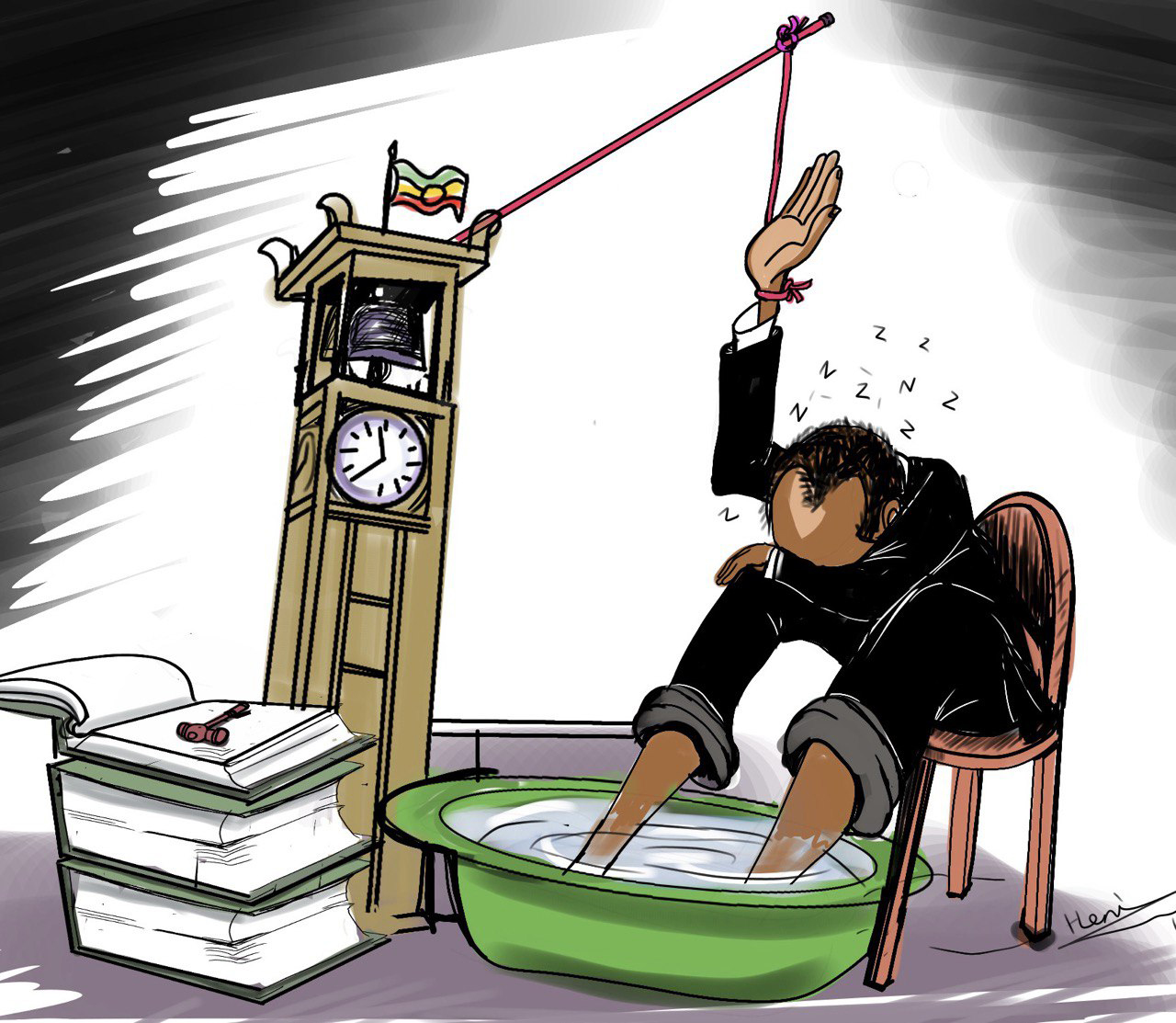
Oct 20 , 2024
By Eden Sahle
My 10-month-old daughter who has not been exposed to screens, has developed a keen interest in books and bedtime stories. Gifts from family members, both local and abroad, have filled her little bookshelf. However, as I began reading these tales to her, I found myself alarmed by the images and messages they conveyed.
Classic fairy tales are usually violent, while their adaptations promote troubling values like jealousy and revenge. What should be wholesome and entertaining stories end up instilling fear rather than delivering meaningful lessons.
I grew up reading fairy tales like Rapunzel, Snow White, and The Prideful Cat. The excitement of a bad situation turning good thanks to a heroic figure is still vivid in my memory. Yet, alongside the excitement, I also recall the terror and confusion these stories caused. Birds pecking out the eyes of Cinderella’s stepsisters or the malice of evil witches—these haunting images have stuck with me.
Now, as a mother, I find these narratives even more disturbing. Fairy tales revolve around a helpless girl trapped in frightening circumstances, waiting to be saved by a handsome prince. This recurring theme sends a damaging message to young girls that their purpose is to find a prince, live in a palace, and find happiness only through marriage, while enemies are punished.
Childhood psychologists warn that these stories can warp a child’s self-image, shaping unrealistic expectations of life. Research has found that children exposed to fairy tales may struggle with body image issues and develop skewed views of relationships. The emphasis on beauty and slimness, common in many tales, compounds the problem. Rarely do we see strong, smart princesses celebrated for anything beyond their looks or romantic pursuits.
The frightening imagery is another issue. Some parents I know note that their children suffer from nightmares after being exposed to these tales. Even my daughter is uneasy about some of the illustrations in books like Rapunzel and The Little Mermaid. As a result, I have set aside these stories in favour of children's spiritual books, which offer positive messages and uplifting visuals.
Moreover, fairy tales paint older women as evil stepmothers or witches, subtly instilling a fear of ageing and reinforcing negative stereotypes about elderly women. The lack of good parental figures only adds to the distorted view children may develop.
Yes, we live in a complex world, and children will eventually learn that life is filled with difficulties. However, exposing them to portrayals that suggest magical fixes—whether through fairy godmothers or enchanted frogs—offers the wrong lesson. Instead, children should be taught resilience and problem-solving in a way that is encouraging, not terrifying.
Educational content in children’s stories can spark their imagination without harmful side effects. Thoughtfully crafted tales can prepare children for the real world while nurturing their creativity. Stories filled with moral lessons about kindness, hard work, and perseverance can lay a strong foundation for how children pass through life. Even when a story depicts dark moments, it should accentuate solutions that teach patience and perseverance.
In today’s world, where children face so much uncertainty, the stories we share with them should inspire strength, empathy, and wisdom. Exposing them to life’s complexities through well-crafted narratives is essential, but it must be done with care, ensuring that their learning experience is rooted in hope and empowerment—not fear.
PUBLISHED ON
Oct 20,2024 [ VOL
25 , NO
1277]

Sunday with Eden | May 13,2023

View From Arada | Apr 09,2022

Sunday with Eden | Jan 05,2019

Agenda | Mar 04,2023

My Opinion | Jun 05,2021

My Opinion | May 07,2022

Commentaries | Jun 01,2019

Life Matters | Feb 12,2022

Editorial | Aug 10,2019

Editorial | Feb 09,2019

My Opinion | 132151 Views | Aug 14,2021

My Opinion | 128561 Views | Aug 21,2021

My Opinion | 126482 Views | Sep 10,2021

My Opinion | 124091 Views | Aug 07,2021





Dec 22 , 2024 . By TIZITA SHEWAFERAW
Charged with transforming colossal state-owned enterprises into modern and competitiv...

Aug 18 , 2024 . By AKSAH ITALO
Although predictable Yonas Zerihun's job in the ride-hailing service is not immune to...

Jul 28 , 2024 . By TIZITA SHEWAFERAW
Unhabitual, perhaps too many, Samuel Gebreyohannes, 38, used to occasionally enjoy a couple of beers at breakfast. However, he recently swit...

Jul 13 , 2024 . By AKSAH ITALO
Investors who rely on tractors, trucks, and field vehicles for commuting, transporting commodities, and f...

Jul 12 , 2025
Political leaders and their policy advisors often promise great leaps forward, yet th...

Jul 5 , 2025
Six years ago, Ethiopia was the darling of international liberal commentators. A year...

Jun 28 , 2025
Meseret Damtie, the assertive auditor general, has never been shy about naming names...

Jun 21 , 2025
A well-worn adage says, “Budget is not destiny, but it is direction.” Examining t...

Jul 13 , 2025 . By YITBAREK GETACHEW
The Addis Abeba City Revenue Bureau has introduced a new directive set to reshape how...

Jul 13 , 2025 . By BEZAWIT HULUAGER
Addis Abeba has approved a record 350 billion Br budget for the 2025/26 fiscal year,...

Jul 13 , 2025 . By RUTH BERHANU
The Addis Abeba Revenue Bureau has scrapped a value-added tax (VAT) on unprocessed ve...

Jul 13 , 2025 . By NAHOM AYELE
Federal lawmakers have finally brought closure to a protracted and contentious tax de...